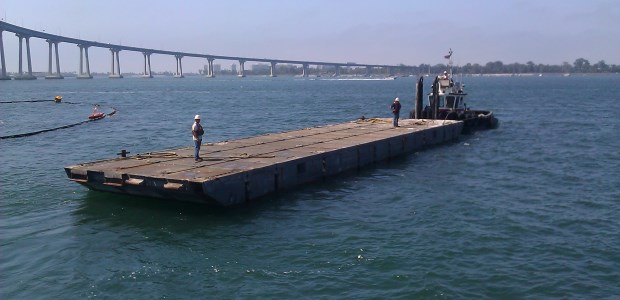
Rule Requires PFDs for Crews of Uninspected Commercial Barges and Sailing Vessels
Before 2010, certain uninspected commercial vessels, including barges and sailing vessels, were not covered by the statute requiring the Coast Guard to regulate lifesaving devices on uninspected vessels -- the devices were required on such commercial vessels only if they carried passengers for hire.
The U.S. Coast Guard published a final rule Sept. 10 that will require personnel aboard uninspected non-passenger commercial barges and sailing vessels to wear a personal flotation device (PFD) when exposed to the hazard of falling overboard. The rule aligns the USCG regulations with the 2010 Coast Guard Authorization Act; before 2010, certain uninspected commercial vessels, including barges and sailing vessels, were not covered by the statute requiring the Coast Guard to regulate lifesaving devices on uninspected vessels -- the devices were required on such uninspected commercial vessels only if they carried passengers for hire.
The final rule says this rulemaking promotes the Coast Guard's marine safety mission. Until the 2010 Coast Guard Authorization Act was enacted into law, section 4102(b) applied only to uninspected vessels "propelled by machinery," thus excluding most barges and some sailing vessels unless they carried
passengers for hire. As amended, section 4102(b) now requires all non-recreational uninspected vessels, regardless of vessel type or mode of propulsion, to make an appropriate form of lifesaving device available for the use of individuals on board the vessel. The types and numbers of devices appropriate for each type of vessel are left to the Coast Guard's discretion, as are the requirements for installing, maintaining, and using those devices.
When the agency published a notice of proposed rulemaking last year, comments came in response from the barge industry, among others. Based on comments regarding the number of vessels affected by the final rule, USCG re-evaluated that issue and determined that an estimated 62,240 vessels are affected by it.